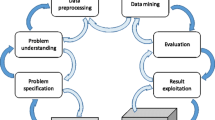Abstract
Record linkage is a technique widely used to gather data stored in disparate data sources that presumably pertain to the same real world entity. This integration can be done deterministically or probabilistically, depending on the existence of common key attributes among all data sources involved. The probabilistic approach is very time-consuming due to the amount of records that must be compared, specifically in big data scenarios. In this paper, we propose and evaluate a methodology that simultaneously exploits multicore and multi-GPU architectures in order to perform the probabilistic linkage of large-scale Brazilian governmental databases. We present some algorithmic optimizations that provide high accuracy and improve performance by defining the best algorithm-architecture combination for a problem given its input size. We also discuss performance results obtained with different data samples, showing that a hybrid approach outperforms other configurations, providing an average speedup of 7.9 when linking up to 20.000 million records.



Similar content being viewed by others
References
Andrade G, Viegas F, Ramos GS, Almeida J, Rocha L, Gonçalves M, Ferreira R (2013) GPU-NB: a fast CUDA-based implementation of Naïve Bayes. In: 2013 25th International Symposium on Computer Architecture and High Performance Computing, pp 168–175
Bloom BH (1970) Space/time trade-offs in hash coding with allowable errors. Commun ACM 13(7):422–426
Cook S (2013) CUDA Programming: A Developer’s Guide to Parallel Computing with GPUs, 1st edn. Morgan Kaufmann, San Francisco
Doan A, Halevy A, Ives Z (2012) Principles of Data Integration. Elsevier, Amsterdam
Étienne EY (2012) Hyper-threading. TurbsPublishing, Saarbrücken
Fellegi IP, Sunter AB (1969) A theory for record linkage. J Am Stat Assoc 64:1183–1210
Feng X, Jin H, Zheng R, Zhu L (2014) Near-duplicate detection using GPU-based simhash scheme. In: 2014 International Conference on Smart Computing, pp 223–228
Forchhammer B, Papenbrock T, Stening T, Viehmeier S, Naumann U.D.F (2013) Duplicate detection on GPUs. In: BTW. Köllen-Verlag, pp 165–184
Kim H.s, Lee D (2007) Parallel linkage. In: Proceedings of the Sixteenth ACM Conference on Information and Knowledge Management, CIKM 2007. ACM, New York, NY, USA, pp 283–292
Mamun AA, Aseltine R, Rajasekaran S (2015) RLT-S: a web system for record linkage. PLoS ONE 10(5):1–9
Mamun AA, Aseltine R, Rajasekaran S (2016) Efficient record linkage algorithms using complete linkage clustering. PLoS ONE 11(4):1–21
Mamun AA, Mi T, Aseltine R, Rajasekaran S (2014) Efficient sequential and parallel algorithms for record linkage. J Am Med Inform Assoc 21(2):252–262
Mizell E, Biery R (2017) How GPUs are defining the future of data analytics
Munshi A, Gaster B, Mattson TG, Fung J, Ginsburg D (2011) OpenCL Programming Guide, 1st edn. Addison-Wesley, Reading
NVIDIA Corporation: NVIDIA CUDA C programming guide (2010). Version 3.2
OpenMP Architecture Review Board: OpenMP application program interface version 4.0 (2013)
Pokorny J (2011) NoSQL databases: a step to database scalability in web environment. In: Proceedings of the 13th International Conference on Information Integration and Web-based Applications and Services, iiWAS ’11. ACM, New York, NY, USA, pp 278–283
Rendle S, Schmidt-Thieme L (2008) Scaling Record Linkage to Non-uniform Distributed Class Sizes. Springer, Berlin, pp 308–319
Sehili Z, Kolb L, Borgs C, Schnell R, Rahm E (2015) Privacy preserving record linkage with ppjoin. In: Datenbanksysteme für Business, Technologie und Web (BTW), pp 85–104
Winkler WE (1999) The state of record linkage and current research problems
Zhong Z, Rychkov V, Lastovetsky A (2015) Data partitioning on multicore and multi-GPU platforms using functional performance models. IEEE Trans Comput 64(9):2506–2518
Acknowledgements
This work has been partially supported by CNPq, FAPESB, Bill & Melinda Gates Foundation, The Royal Society (UK), Medical Research Council (UK), NVIDIA Hardware Grant Program, Generalitat Valenciana (Grant PROMETEOII/2014/003), Spanish Government and European Commission through TEC2015-67387-C4-1-R (MINECO/FEDER), and network CAPAP-H. We have also worked in cooperation with the EU-COST Programme Action IC1305, “Network for Sustainable Ultrascale Computing (NESUS)”.
Author information
Authors and Affiliations
Corresponding author
Rights and permissions
About this article
Cite this article
Boratto, M., Alonso, P., Pinto, C. et al. Exploring hybrid parallel systems for probabilistic record linkage. J Supercomput 75, 1137–1149 (2019). https://doi.org/10.1007/s11227-018-2328-3
Published:
Issue Date:
DOI: https://doi.org/10.1007/s11227-018-2328-3




